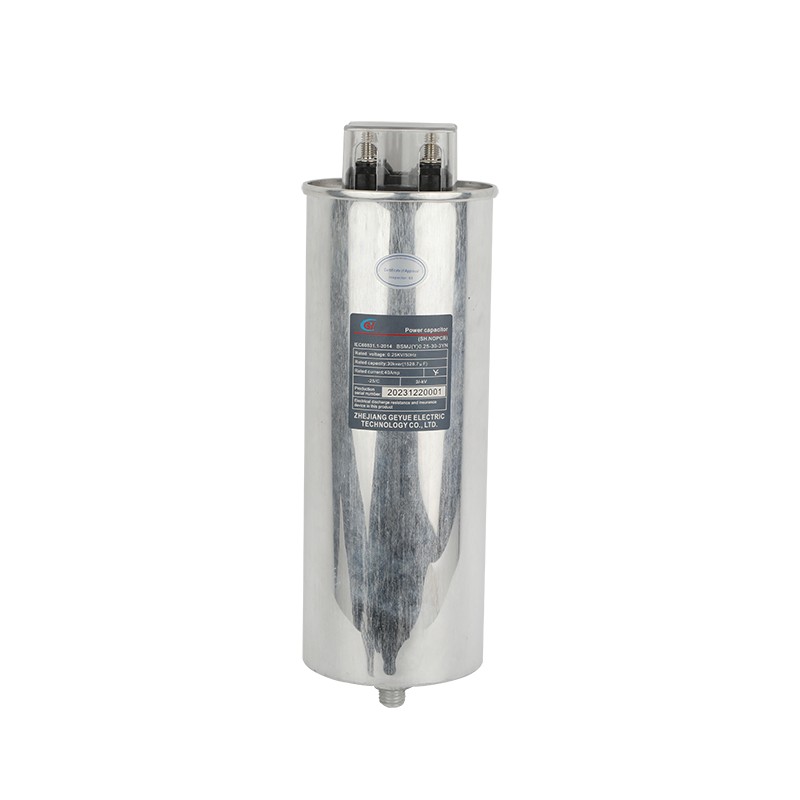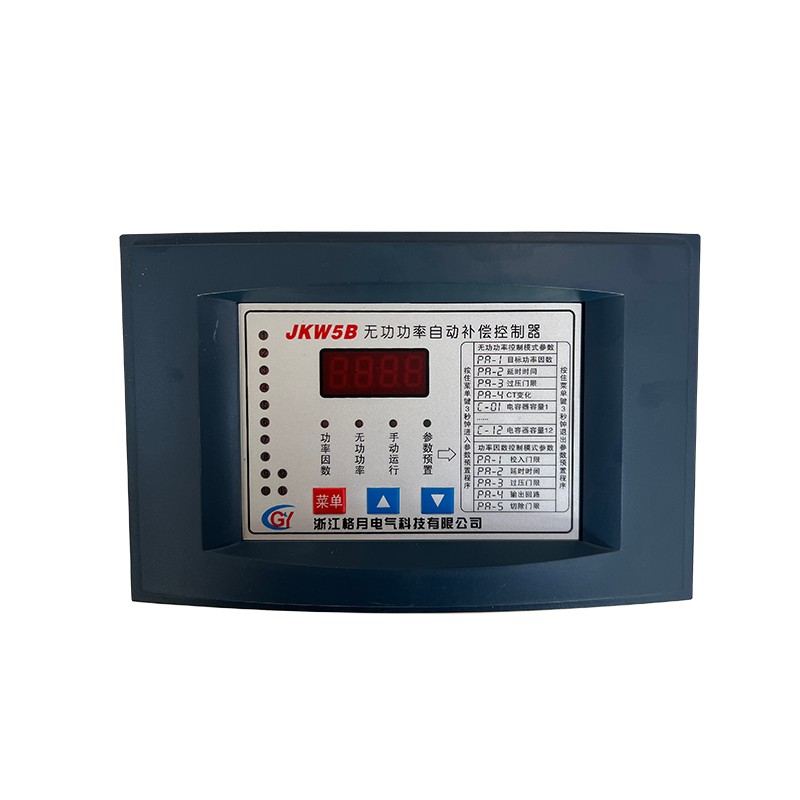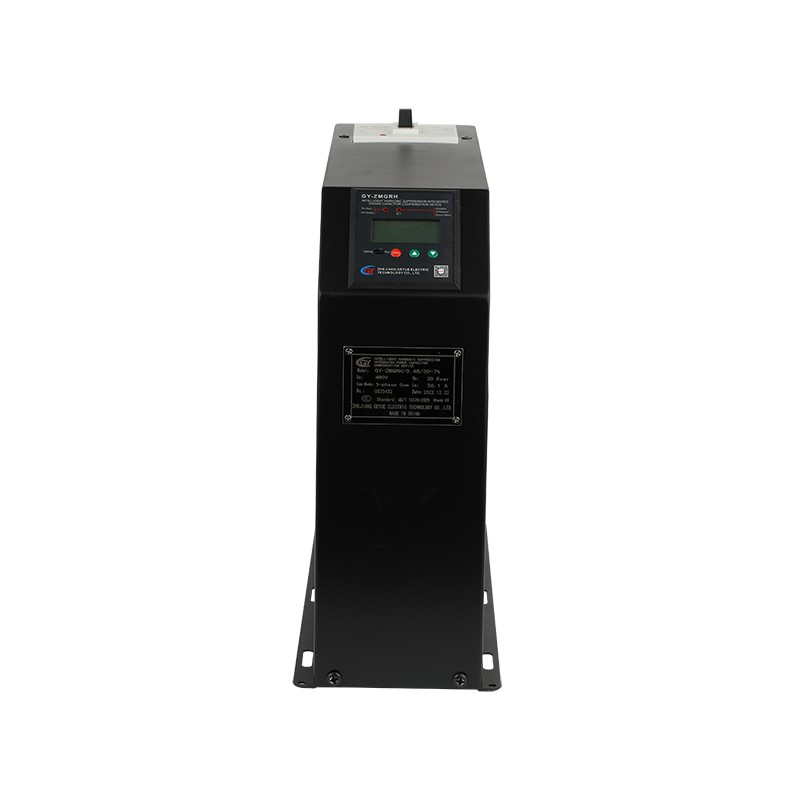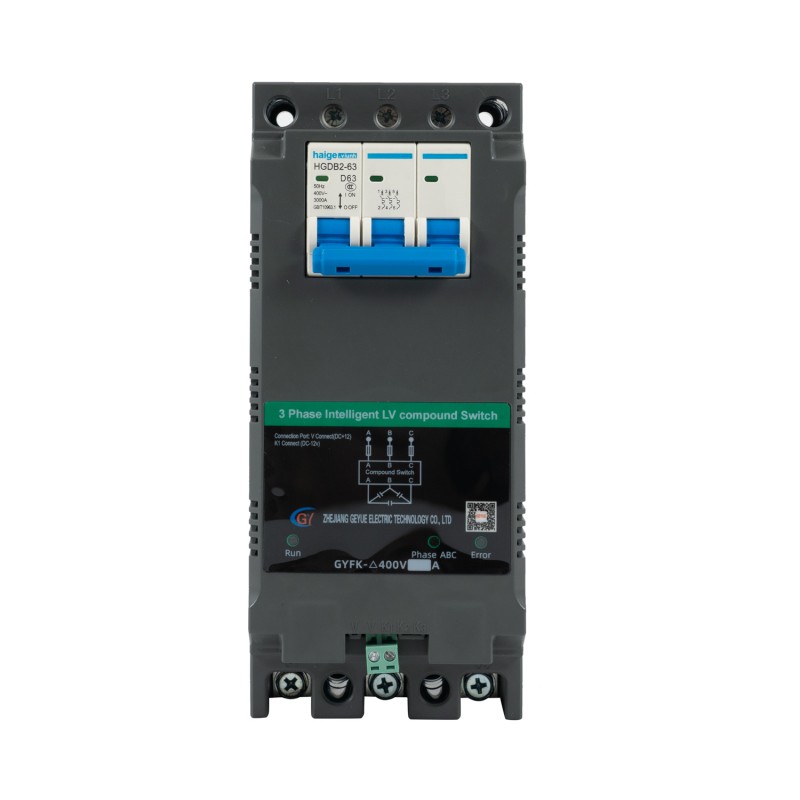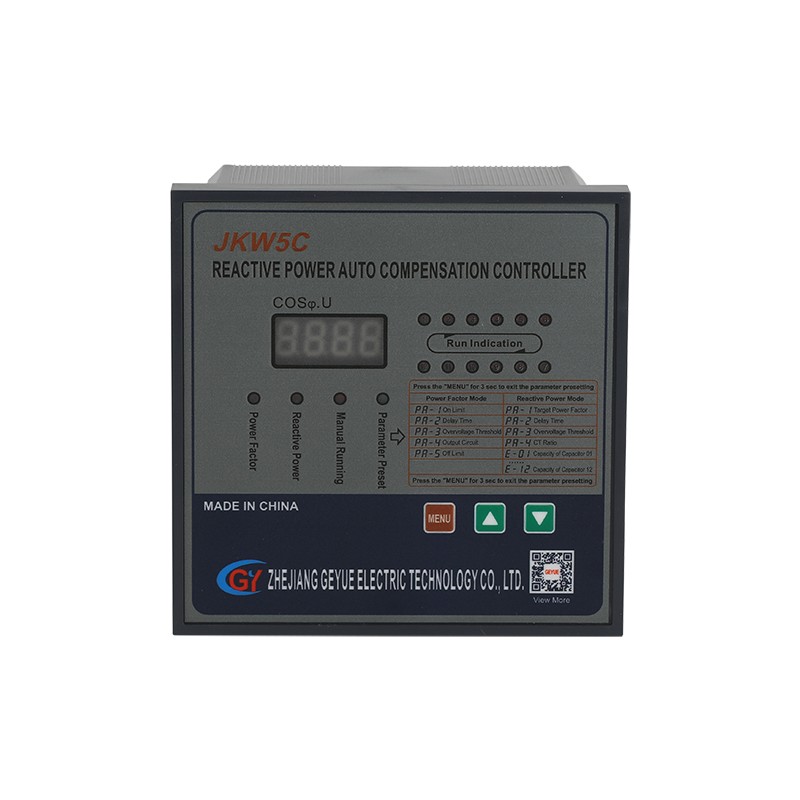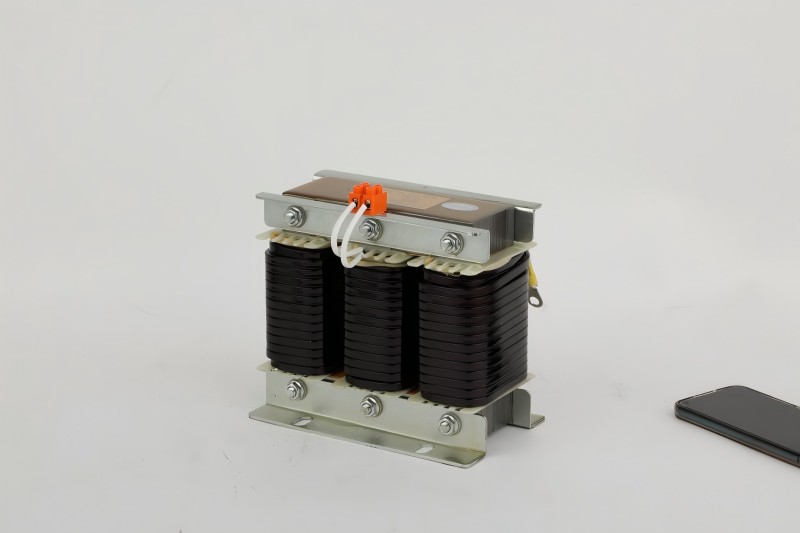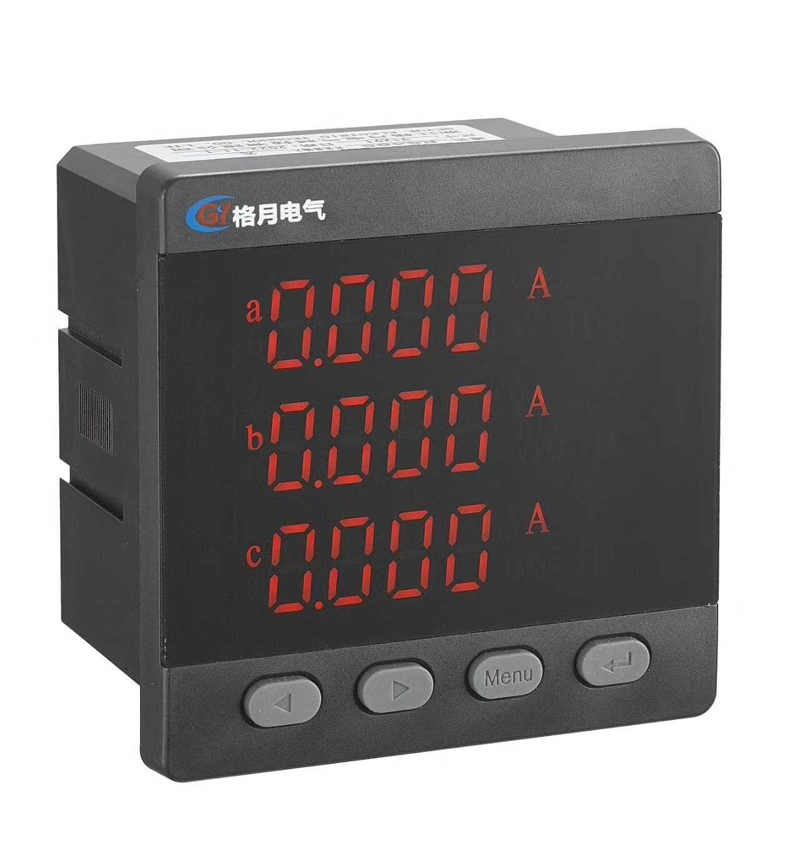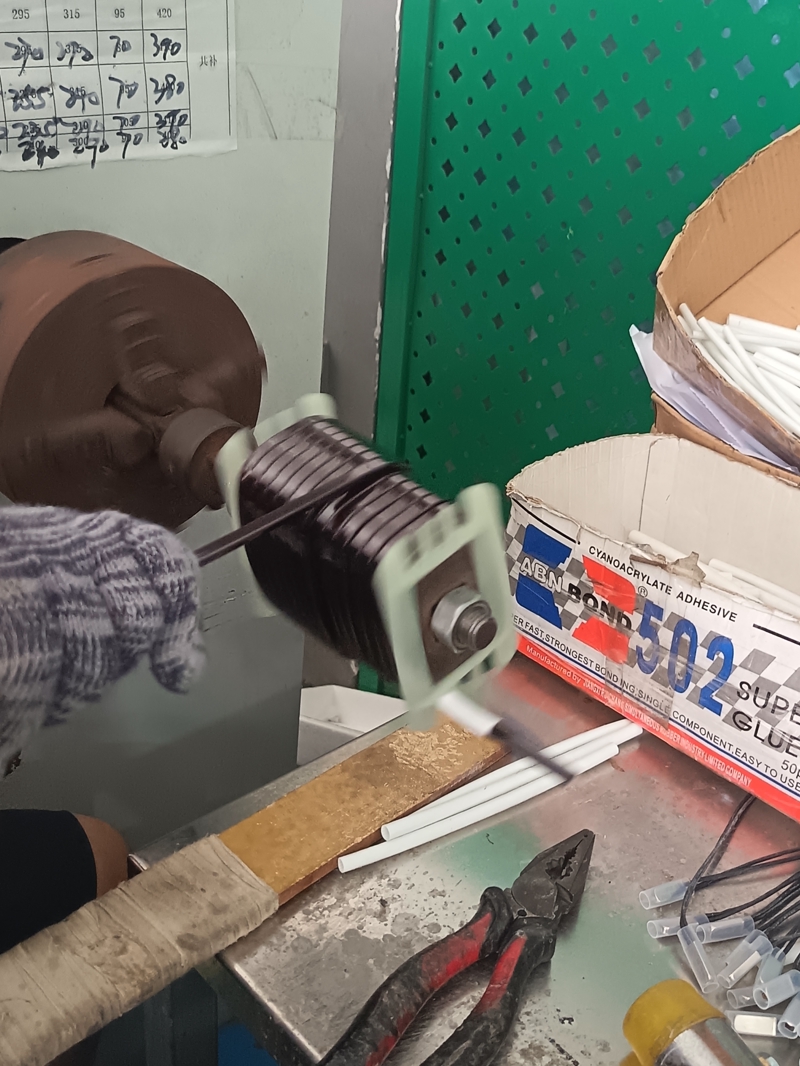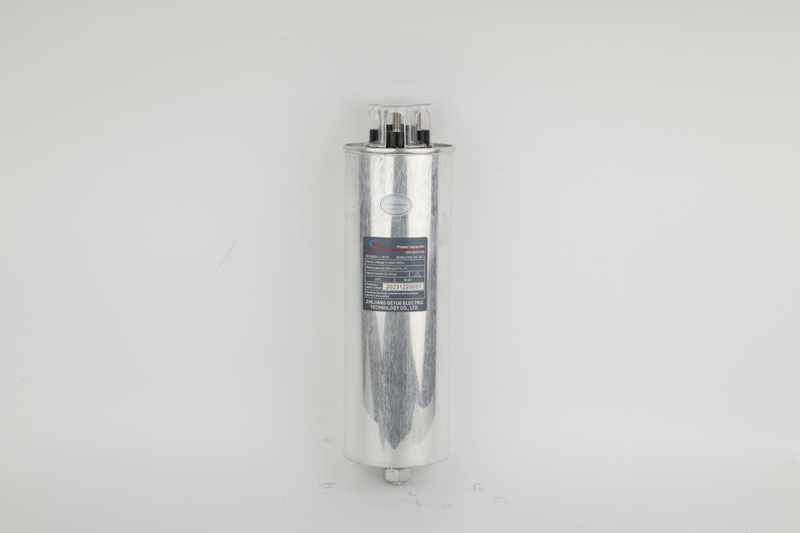How To Make The Compensation Cabinet Zero Failure For Three Years? JKWF Controller Gives The Answer
In industrial power distribution systems, the record of 1.7 failures per year in compensation cabinets continues to trouble equipment managers. Statistics from the State Grid Fault Data Center (report number SGCC-FD2024) show that the direct losses caused by power capacitor explosions in 2023 will reach US$600 million, of which 83% of the accidents are caused by harmonic resonance and life management failure. Traditional controllers are limited by 8-bit processors and static control strategies, and are unable to cope with millisecond-level disturbances of impact loads and drastic fluctuations in environmental parameters.
Geyue Electric's JKWF series intelligent Automatic Power Factor Controller completely reverses the dilemma through triple technical reconstruction: based on 1024-point real-time spectrum analysis to achieve accurate suppression of 50th harmonics; relying on deep learning models to reduce the capacitor life prediction error to ±72 hours; combined with dynamic parameter compensation of meteorological data to overcome harsh working conditions. In the continuous operation verification, the controller reduced the failure rate of compensation cabinets from the industry average of 1.7 times/month to 0.004 times/month, creating a new industry record of zero failures for 36 consecutive months. The equipment operation and maintenance costs also dropped by 64%, from an average of RMB 180,000 per year to RMB 65,000. This transformation, driven by core algorithms, is pushing the era of passive repairs into a new era of predictive operation and maintenance.
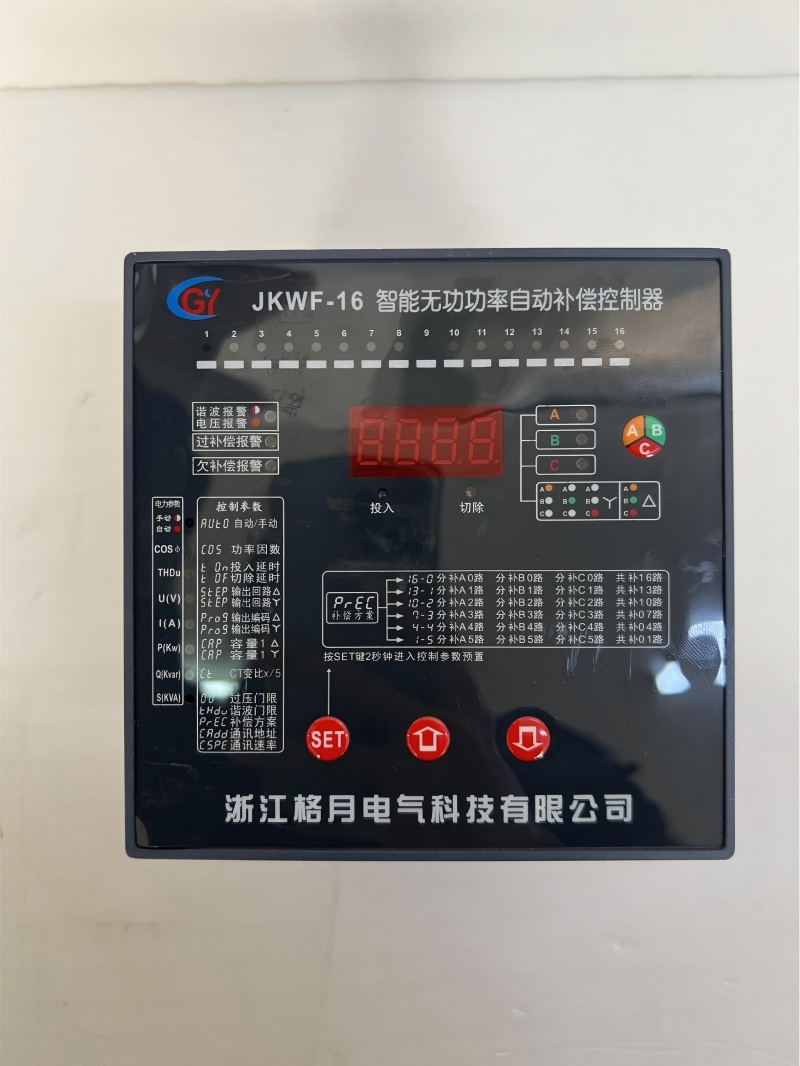
Harmonic Monitoring And Management System
The JKWF intelligent Automatic Power Factor Controller is equipped with a professional harmonic monitoring architecture, which captures the grid waveform in real time through a high-speed data sampling system of 128 points per microsecond. Its core uses a 1024-point fast Fourier transform algorithm to decompose the 0 to 2500Hz spectrum at the millisecond level and accurately locate the 2nd to 50th harmonic content. When the distortion of a specific frequency band is detected to exceed the standard, the system immediately activates the four-level response mechanism: first, the capacitor bank circuit of the dangerous frequency band is locked, and the hardware-level locking instruction is executed to prevent resonance amplification; the phase compensation strategy is synchronously generated to drive the IGBT module to output the reverse harmonic current; finally, the total harmonic distortion rate of the grid is continuously suppressed within the 5% safety threshold of the IEEE 519 standard. In the actual measurement of the metal smelting plant, the system reduced the 23rd characteristic harmonic generated by the operation of the medium frequency furnace from 31.7% to 1.3%, completely eliminating the burning accident of the smelting transformer caused by harmonic overvoltage. The operation data for three consecutive years showed that the damage rate of compensation equipment decreased by 92%, and the maintenance cost was reduced to 18% of the original expenditure.
Capacitor Life Prediction Mechanism
The device integrates a three-dimensional state perception network, which collects 26 parameters such as the capacitor dielectric loss tangent, self-healing discharge frequency, and shell temperature gradient every 180 seconds. Based on the deep neural network model trained with 100,000 sets of historical data, the remaining life can be accurately estimated by analyzing the dielectric constant decay curve and temperature correlation characteristics. When the system detects that the expected life of a capacitor unit is lower than the critical value, it automatically removes it from the switching sequence and activates the sound and light alarm, and simultaneously pushes replacement suggestions to the operation and maintenance platform. The actual application of this mechanism in chemical plants shows that the average service life of power capacitors is 129,600 hours, which is 3.2 times longer than the traditional solution. The predictive maintenance system shortens the fault handling response time to less than four hours and reduces the spare parts inventory by 62%. The operation and maintenance cost has dropped from an average of 180,000 yuan per year to 65,000 yuan, and the equipment online rate has reached 99.9%.
Dynamic Adaptive Load Regulation
The system has a built-in digital twin model library containing a variety of industrial loads, which can identify load types by analyzing the characteristics of current mutations. When dealing with the start-stop impact of high-power equipment, the Automatic Power Factor Controller autonomously executes a millisecond-level response strategy: by shortening the capacitor switching interval to less than 20 milliseconds and implementing a group staggered switching scheme, the common closing inrush current of traditional systems is reduced by more than 90%. The dynamic adjustment mode ensures that the power factor is always stable in the high-quality range of 0.95 to 1.0, fully meeting the assessment standards of the power supply department and completely avoiding economic penalties caused by unqualified power factor.
Intelligent Compensation Function For Environmental Parameters
The integrated environmental sensor array monitors the operating temperature, relative humidity and atmospheric pressure in real time, and the environmental adaptation algorithm trained with massive historical data can automatically correct the capacitor parameter model. The capacity compensation coefficient is actively increased by about 36% under extreme low temperature conditions; the dielectric loss parameter is automatically adjusted to 0.72 times the baseline value in high-altitude scenes. After the system is connected to the weather forecast platform, it has the ability to respond to environmental warnings four hours in advance, ensuring the compensation accuracy under severe working conditions such as drastic temperature changes or typhoons, and maintaining the system's stable operation around the clock.
Multi-source Data Value Conversion System
Supports the standardized interface of the current mainstream industrial communication protocol, and realizes efficient data interaction with twelve types of electric energy metering equipment. The Automatic Power Factor Controller automatically generates professional reports containing key indicators such as harmonic control efficiency, equipment health status, and energy efficiency economic benefits. The optimized data structure complies with the international carbon certification system specifications and can be seamlessly connected to the green credit assessment process of financial institutions. Actual measured data shows that the probability of enterprises using this system to obtain preferential loan policies has increased by more than 30%, and the average financing cost has been reduced by more than a quarter.
- Can Active Power Filters Become the Key to Solving Power Quality Problems?
- What Role do Reactors Play in Modern Power Systems?
- Can Capacitor Switches Become Key Equipment in the Smart Grid Era?
- How Has the CJ19 AC Contactor Become a Reliable Choice for Capacitor Switching?
- Can Cylinder Self-healing Shunt Capacitor Become the Ideal Choice for the Smart Grid Era?
- Apart from Saving Electricity Costs, What Value does Low-Voltage Reactive Power Compensation Bring to Enterprises?

